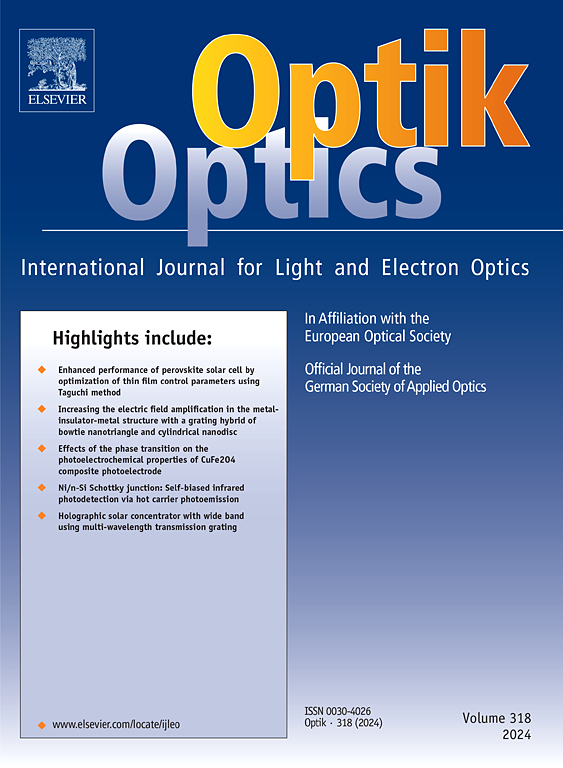A novel laser light absorption model for composite materials in the context of laser ultrasonic testing
IF 3.1
3区 物理与天体物理
Q2 Engineering
引用次数: 0
Abstract
When a laser pulse impinges on a composite material, a portion of the light is absorbed by the matrix, while the remainder is absorbed by the embedded fibers. Conventional models overlook the substantial differences in optical properties between these two constituents. This paper, however, introduces a novel analytical model for laser light absorption in fiber-reinforced composite materials. This macroscopic model incorporates distinct optical absorptivity for both the matrix and embedded fibers, offering adaptability to various scenarios without introducing additional computational cost to simulations. The dynamic thermal expansion and elastic wave generation inside the material is considered to study the effects of the presented model on the generated waves. Investigations are conducted on a Carbon Fiber Reinforced Plastic (CFRP) plate with variable epoxy layer thickness using Nd:YAG and mid-IR lasers. Results demonstrate a significant enhancement in temperature distribution within the material, elucidating experimental observations previously unexplained by conventional models. Under consistent laser energy, pulse duration, and beam radius, the Nd:YAG laser induces notably higher temperatures in the CFRP-epoxy interface compared to the mid-IR laser. Furthermore, thicker epoxy layers result in lower temperatures and higher displacement amplitudes, aligning with the desirable characteristics for laser ultrasonic testing applications.
求助全文
约1分钟内获得全文
求助全文
来源期刊

Optik
物理-光学
CiteScore
6.90
自引率
12.90%
发文量
1471
审稿时长
46 days
期刊介绍:
Optik publishes articles on all subjects related to light and electron optics and offers a survey on the state of research and technical development within the following fields:
Optics:
-Optics design, geometrical and beam optics, wave optics-
Optical and micro-optical components, diffractive optics, devices and systems-
Photoelectric and optoelectronic devices-
Optical properties of materials, nonlinear optics, wave propagation and transmission in homogeneous and inhomogeneous materials-
Information optics, image formation and processing, holographic techniques, microscopes and spectrometer techniques, and image analysis-
Optical testing and measuring techniques-
Optical communication and computing-
Physiological optics-
As well as other related topics.
 求助内容:
求助内容: 应助结果提醒方式:
应助结果提醒方式:


